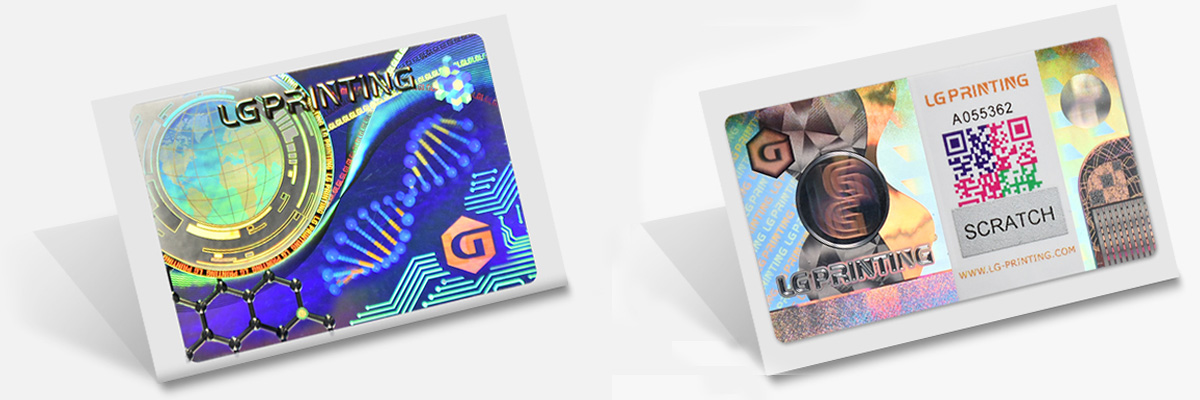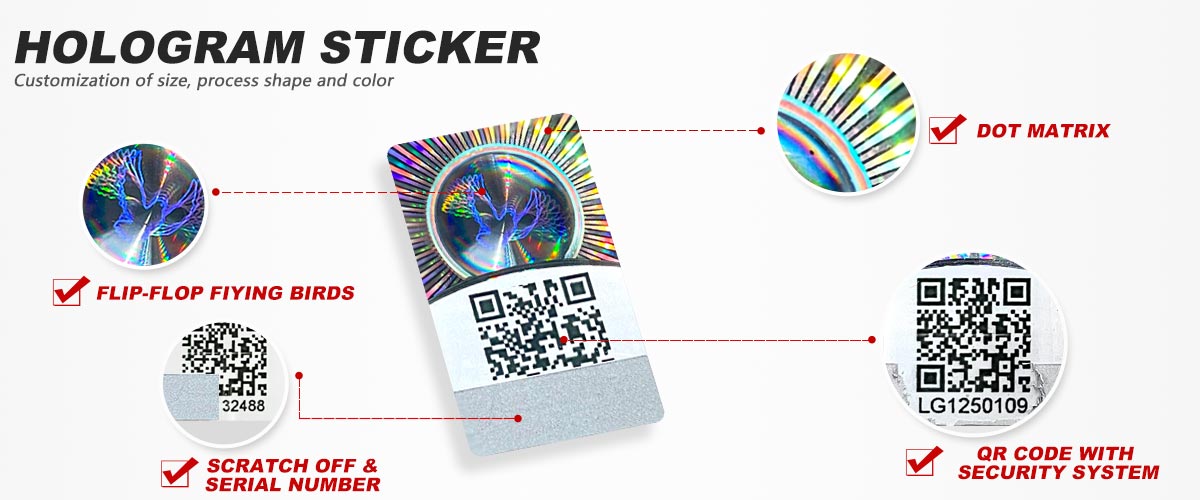Holograms are the most effective product against counterfeiting. One reason for their success is that holograms are based on optical technology and, until now, unlike all other forms of printed graphics, they cannot be copied, scanned or transmitted electronically. A hologram properly specified for an application is a very difficult copy and any copy or copy attempt is easily identified. Holograms help users identify and verify branded products or documents.

While a hologram by itself cannot stop forgeries, it can help identify copies. That's why money around the world uses hologram-based anti-counterfeiting devices. Using a hologram is like building a 20-foot fence around your home. Burglars attack poorly protected homes.
Nowadays, it is very difficult for companies to protect their products from copying and copying, products are copied and copies are sold on the market with the credit of the original products. This results in hammering the original product in a variety of ways. First, the sales of the original products declined, and second, the imitation products lost goodwill due to poor quality. Counterfeiters cause heavy losses to manufacturers and consumers. Using holograms can help brands get rid of such fake practices. Holograms provide security, authentication, and anti-counterfeiting protection.

Then, what is the holographic anti-counterfeiting label?
Holographic anti-counterfeiting is a new anti-counterfeiting technology developed by laser holographic technology, also known as laser holographic anti-counterfeiting. Laser holography is a stereoscopic photography technology that developed rapidly after the advent of the laser in the 1960s. At any time other anti-counterfeiting technology progress, holographic anti-counterfeiting has also been new development and application.
And, what are holographic anti-counterfeiting technologies?
1. Multi-channel holographic anti-counterfeiting technology. Multi-channel holographic anti-counterfeiting in the rotation of the logo, the 315 national product anti-counterfeiting query center, will see different patterns in the same position of the logo.
2. Stealth encryption technology. Stealth encryption technology makes the encryption pattern at any position of the logo, which can be seen below the laser rendition device.
3.360° computer lattice holography. The combination and transformation of radial, circular and spiral light spots will appear in the 360° observation range of the image with a strong dynamic effect.
4. Double-layer holography. Double-layer holographic technology can reveal the holographic logo, but also see the anti-counterfeiting layer printed with patterns and words, with double security anti-counterfeiting effect.
5. Fluorescence encryption holography. The principle of fluorescence encryption holography is the same as that of coin fluorescence encryption.
6. Dynamic coding anti-counterfeiting technology. Dynamic coding anti-counterfeiting is to put the trademark in front of the eyes, slowly turn the trademark will appear continuous action pattern.
7. Telephone code holographic anti-counterfeiting technology. Telephone code anti-counterfeiting identification is made by the combination of holographic anti-counterfeiting technology and telephone code anti-counterfeiting technology, the authenticity can be checked by querying the unified core database.
8. Nuclear microhologram anti-counterfeiting technology. Nuclear microhole anti-counterfeiting mark is composed of holographic anti-counterfeiting technology and nuclear microhole anti-counterfeiting technology.

